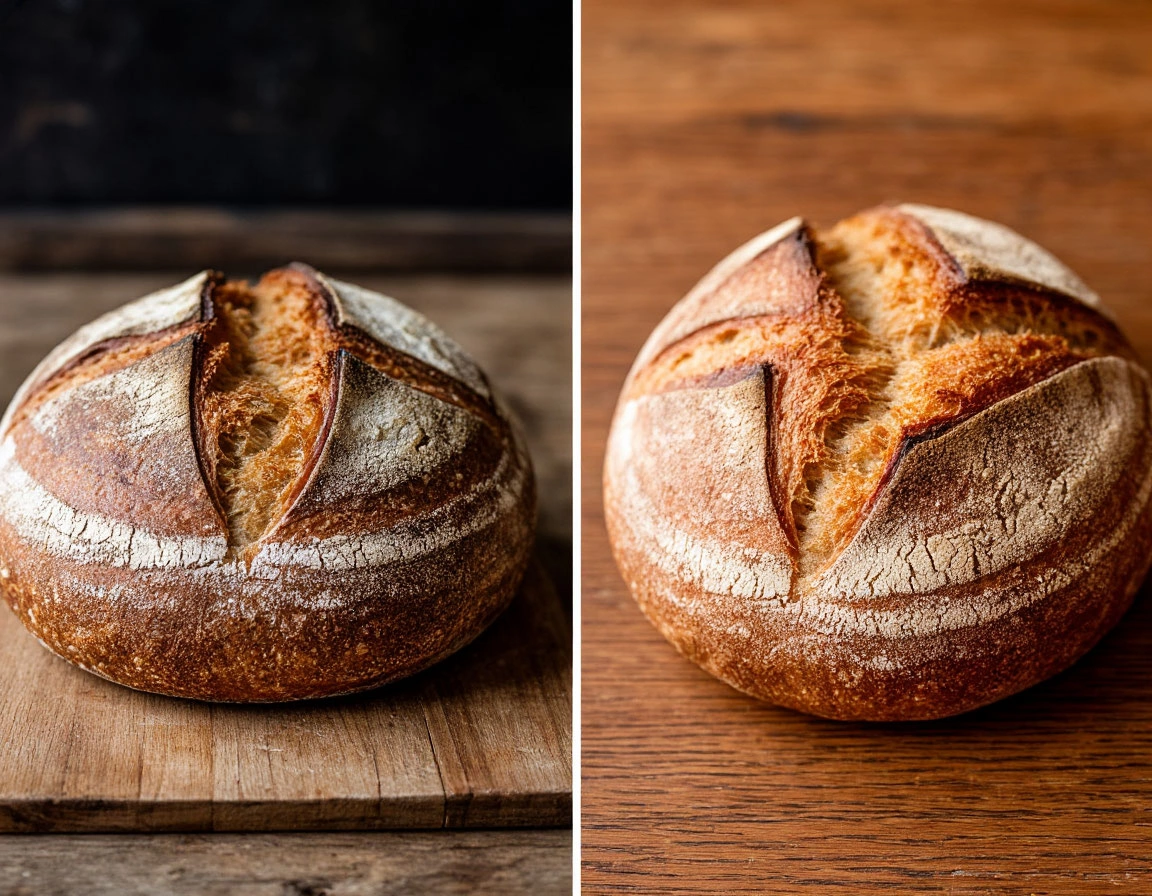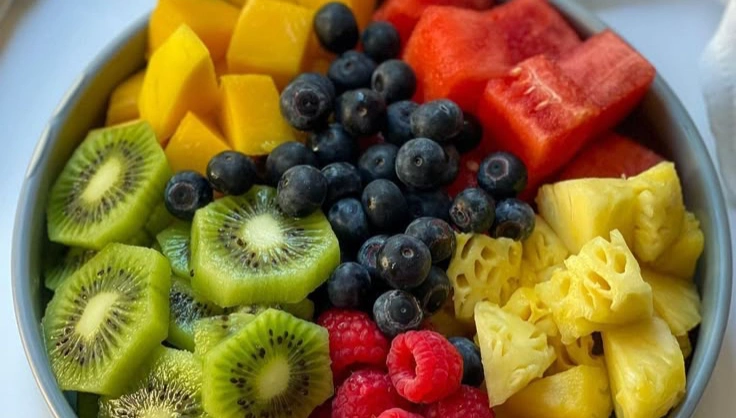Baking Posts on Crowch
Thanksgiving has long become more than just a national holiday in the United States and Canada — it is a symbol of unity and gratitude recognized around the world. Its roots go back to the 17th century, when the Pilgrims, after a harsh winter and their first harvest, held a feast with Native Americans. Since then, the holiday has gained strong traditions and deep cultural meaning.
Symbols and rituals
The main symbol of Thanksgiving is the turkey. That is why the holiday is sometimes even called “Turkey Day.” Turkey became the traditional dish because it was a widely available source of meat for early settlers. Today’s holiday menu also includes mashed potatoes, corn, cranberry sauce, and pumpkin pie. Each of these foods is connected to the harvest and the land of the New World.

Yet more important than the food is the ritual of gathering at the same table. Families share words of gratitude for everything good that happened during the year. This tradition unites generations and reminds people to value not only material things but also human relationships.
Modern meaning
Today, Thanksgiving has gone beyond its historical origins. It has become a day when millions of people put aside work and daily worries to spend time with loved ones. Families often travel long distances to be together, which is why this period is considered the busiest time of the year for the U.S. transportation system.

The holiday also carries a strong social mission. Thousands of Americans take part in volunteer activities, serve meals to the homeless, and help those in need. Gratitude is expressed not only in words but also in actions.
Parades and culture
Another integral part of the holiday is parades. The most famous one is Macy’s Parade in New York City, which has been held since 1924. Millions of viewers watch giant character balloons, colorful floats, and live performances.
Thanksgiving has also become deeply embedded in popular culture. Scenes of family dinners, quarrels, and reconciliations at the Thanksgiving table are common in movies and TV shows. These images have made the holiday recognizable far beyond North America.
A day of gratitude around the world
Although Thanksgiving is officially celebrated only in the United States and Canada, the idea of gratitude for life, family, and abundance is universal. In recent years, similar traditions have appeared in other countries as well. For some, it is a way to learn about American culture; for others, it is an opportunity to remind themselves of the value of simple things.
Conclusion
Thanksgiving is not only about turkey and parades. It is a holiday that teaches us to pause, reflect on the past year, and say words of gratitude. In a world that is constantly changing, such moments are especially important: they bring us back to human values, strengthen ties between generations, and remind us that the most important thing in life is the people around us.
Thanksgiving is one of the most important holidays in the United States and Canada. Its origins date back to the 17th century, when the Pilgrims from Europe arrived in the New World. In 1621, after their first successful harvest, they held a feast to express gratitude for the support of the Native Americans and for the bounty of the land. This tradition of giving thanks for harvest, life, and family has remained central to American culture ever since.

Today, Thanksgiving is celebrated on the fourth Thursday of November in the United States and on the second Monday of October in Canada. The heart of the holiday is the family dinner. A roasted turkey, mashed potatoes, cranberry sauce, vegetables, and pumpkin pie are the typical dishes served at the table. These foods are not only delicious but also symbolic of history and abundance.

Yet Thanksgiving is more than just food. It is a time when families gather, share stories, and strengthen their bonds. Many Americans also devote part of the day to charity, volunteering at shelters and donating food to those in need. Another major tradition is the Thanksgiving parades, with Macy’s Parade in New York City being the most famous. Millions watch the colorful floats, giant balloons, and musical performances.
In modern times, Thanksgiving has grown beyond its religious and agricultural roots. It has become a moment of reflection, when people pause to consider what they are grateful for and to appreciate family, friendship, and kindness. In today’s fast-paced world, Thanksgiving offers a rare chance to slow down and celebrate the true values of life.
October 16 is more than just a date — it’s a powerful reminder that food is the foundation of life and a shared responsibility for humanity. World Food Day, established by the UN’s Food and Agriculture Organization (FAO) in 1979, unites governments, organizations, and millions of individuals to fight hunger, improve nutrition, and create sustainable food systems that can feed the world without exhausting our planet’s resources.
Food as a Right, Not a Privilege
Every human being has the right to safe, nutritious, and affordable food, yet the reality is alarming. According to the FAO, more than 800 million people suffer from chronic hunger, and over 2 billion experience food insecurity at some point during the year. Meanwhile, in wealthier nations, enormous amounts of perfectly edible food end up in landfills — around 1.3 billion tons globally each year. This is not just wasteful — it’s a moral and environmental crisis.

World Food Day urges us to see the connection between our everyday choices and global hunger. The food we buy, the waste we produce, and the agricultural systems we support all influence whether this crisis worsens or improves.
Global Challenges We Must Face Together
- Hunger and Poverty: Millions of families still cannot rely on their next meal.
- Food Waste: One-third of food produced is lost due to poor storage, inefficient supply chains, and careless consumption.
- Climate Change: Agriculture is vulnerable to extreme weather — droughts, floods, and storms disrupt harvests, threatening food supply.
- Unsustainable Practices: Overuse of water, soil degradation, and deforestation threaten long-term food security.
What We Can Do — Individual and Collective Action

- Choose Local and Seasonal Products: Supporting local farmers reduces transportation emissions and strengthens communities.
- Reduce Household Food Waste: Plan meals, store food properly, and find creative ways to use leftovers.
- Support Global Initiatives: Donate to food banks, volunteer with charities, and advocate for fair food distribution.
- Educate and Inspire: Share information about hunger and sustainability to encourage others to act.
Even small actions — like buying only what you need or switching to sustainable food sources — can have ripple effects. If every person reduced their food waste by just 25%, millions of people could be fed each year.
The Future Is in Our Hands
World Food Day is not only about recognizing a problem; it’s about committing to solutions. Governments must invest in resilient agricultural systems, businesses must adopt responsible supply chains, and individuals must make mindful choices. The journey toward zero hunger will require innovation, cooperation, and compassion on a global scale.
Imagine a future where no child goes to bed hungry, where farmers thrive, and where food systems nourish both people and the planet. That vision is possible — but it begins with each of us. Every meal, every purchase, and every effort to reduce waste moves us closer to a world where food is truly a right for all.
October 16 marks World Food Day, established in 1979 by the Food and Agriculture Organization of the United Nations (FAO). The day aims to raise awareness about hunger, poverty, and the need to ensure that everyone has access to safe, nutritious, and affordable food.
Why This Day Matters
According to the UN, millions of people worldwide suffer from chronic undernourishment, while in other parts of the world, massive amounts of food are wasted. World Food Day reminds us that access to food is a basic human right, not a privilege.
Themes and Goals
Each year, the day is marked with a theme, such as sustainable agriculture, reducing food waste, or adapting to climate change. These themes emphasize the urgent need for joint action — from policymakers to ordinary citizens.

How to Take Part
- Support charities and initiatives that help those in need.
- Reduce your own food waste by planning meals and storing food properly.
- Choose local and seasonal produce to support farmers and reduce environmental impact.
- Advocate for sustainable farming practices that protect both people and the planet.
The Core Message

World Food Day is not just a date on the calendar — it’s a call to action. Every person can make a difference, whether by making mindful food choices, supporting global anti-hunger campaigns, or promoting sustainability. Together, we can work toward a future where no one goes to bed hungry and where food systems nourish both people and the planet.
Every October 1st, World Vegetarian Day shines a light on how our food choices can shape our health, our environment, and the lives of animals. It’s not about perfection or strict rules — it’s about awareness, small steps, and the joy of discovering the variety and richness of plant-based food.
A Tradition with Deep Roots
Vegetarianism is not a modern trend. It has been a way of life in many cultures for centuries. In India, large communities have followed vegetarian diets for religious and ethical reasons for thousands of years. Ancient Greek philosophers like Pythagoras promoted plant-based eating as a path to health and kindness. Today, more and more people worldwide are returning to these values, combining tradition with modern nutrition science.
The Power of Plant-Based Eating

A vegetarian diet can help reduce the risk of chronic diseases, improve digestion, and boost energy levels. It’s rich in fiber, antioxidants, and essential nutrients. For many people, switching even part of their diet to plant-based meals leads to better overall well-being.
Environmentally, plant-based choices reduce greenhouse gas emissions, save water, and help protect forests. Studies show that replacing just one meat-based meal per week with a vegetarian one can have a measurable positive impact on the planet.
Compassion in Action

For animal lovers, vegetarianism is a way to align their meals with their values. Choosing not to eat meat means taking a stand against practices that cause suffering in industrial farming. World Vegetarian Day is a reminder that compassion can be part of every meal we enjoy.
How to Celebrate
- Cook a colorful vegetarian feast with seasonal produce.
- Host a dinner for friends and introduce them to plant-based dishes.
- Try international vegetarian recipes — from Indian dals to Mediterranean mezze.
- Learn about plant-based sources of protein, like lentils, beans, quinoa, tofu, and nuts.
- Share your vegetarian journey online to inspire others.
Small Changes, Big Difference
You don’t need to become fully vegetarian overnight. Starting with one or two meat-free days per week can open the door to new flavors and habits. Many people find that vegetarian meals are just as satisfying and even more creative than they expected.
This October 1st, join the global movement. Celebrate the abundance of nature, nourish your body, and show kindness to the planet and its animals — all with the simple act of choosing what’s on your plate.
Bread, once seen as a universal staple, is increasingly under scrutiny. Not because grains are inherently harmful, but because modern bread — as it’s produced today — barely resembles the traditional loaves of our ancestors. Consumed daily, it can subtly but persistently disrupt digestive function and contribute to long-term gut issues.
Let’s examine why this is happening, where the shift began, and how today’s grain products differ from their natural origins.

🌾 Bread Wasn’t Always a Human Staple
Humans didn’t evolve eating grains. Early hunter-gatherers thrived on wild fruits, nuts, tubers, and meat. Grains — like wheat and barley — entered the human diet relatively recently, around 10,000 years ago. Even then, they were consumed sparingly, often in coarse, fermented, or partially sprouted forms.
Early humans, observing birds pecking at seeds, may have tried mimicking them — only to find whole grains passed through their bodies undigested. Our digestive systems weren’t built for dense, fibrous kernels without prior processing.
🧬 The Grain Evolution: From Feed to Food
Historically, grain hulls and bran were ground into coarse flour and often fed to livestock. It wasn’t until the 1970s eco-food revolution that fiber-heavy whole grain products were promoted as health foods. While plant-based fiber from fruits and vegetables is excellent for digestion, not all grain-based fiber is created equal.
The push for whole grain breads overlooked a critical point: many cereals are inherently hard to digest, especially in large amounts and without proper fermentation or soaking. They can strain the digestive system — especially modern variants.
🧪 Gluten: The Sticky Protein with a Bad Reputation
At the heart of bread-related gut issues lies gluten — a protein composite found in wheat, rye, and barley. Its name comes from the Latin word for “glue,” and it lives up to that. When dough is kneaded, gluten creates the elastic structure that traps air bubbles and gives bread its bounce.
However, modern wheat contains up to three times more gluten than traditional strains. This change wasn’t accidental — it was driven by agricultural breeding to make dough more elastic and bread more visually appealing. Soft, fluffy loaves sell. And high-gluten flour makes industrial baking faster and cheaper.
But what’s easier for manufacturers can be harder for your gut. Gluten acts like glue in your digestive tract, and while many people tolerate it, others experience bloating, inflammation, and irregular digestion.

🔬 Not Just Gluten: The Rise of “Insect-Fighting” Wheat Proteins
Surprisingly, gluten isn’t the only suspect. Research by Professor Detlef Schuppan at the University of Mainz uncovered a lesser-known culprit: amylase-trypsin inhibitors (ATIs). These proteins were introduced into high-yield wheat strains to protect crops from pests.
While effective against insects, these proteins can trigger immune responses in human guts, even among people without celiac disease or gluten sensitivity. Essentially, we’re eating bread designed for shelf life and pest resistance — not human digestion.
🍞 Why Industrial Bread Is a Gut Burden
Let’s recap the main issues with modern bread:
- Overprocessed grains with minimal nutrient content
- High gluten levels causing digestive stress
- New proteins (ATIs) unknown to our biology
- Lack of fermentation, which previously broke down hard-to-digest elements
- High-speed baking that leaves little time for natural enzymatic changes
Many breads today are more industrial product than food. Their structure is engineered for mass production, not digestive health.

💡 What’s the Alternative?
While it’s not necessary to banish all bread, being selective makes a big difference. Opt for:
- Slow-fermented sourdoughs made with ancient grains
- Sprouted grain breads, which reduce antinutrients
- Gluten-free alternatives (if sensitive), made from buckwheat, rice, or millet
- Limiting portion sizes and frequency of consumption
Also, watch how your body reacts. If you feel sluggish, bloated, or mentally foggy after bread-heavy meals, consider a break. Your digestive system might be asking for something easier to handle.
Fruits are not just a tasty addition to your diet — they are a powerful source of vitamins, minerals, fiber, and antioxidants. Eating a variety of fruits regularly has a positive impact on overall health, especially digestion.
1. Improved digestion
Fruits are rich in dietary fiber, both soluble and insoluble. Fiber promotes healthy bowel movements, improves intestinal motility, and helps prevent constipation. Apples, pears, plums, figs, and berries are especially effective for digestive health.
2. Gut microbiome support
Some fruits contain natural prebiotics — substances that nourish beneficial gut bacteria. Bananas, apples, and berries help grow healthy gut flora, supporting immunity and nutrient absorption.
3. Anti-inflammatory and antioxidant effects
Citrus fruits, pomegranates, kiwis, grapes, and blueberries are rich in antioxidants, which reduce inflammation and protect cells from damage. This supports not only digestion, but also cardiovascular and neurological health.
4. Natural enzyme aid
Fruits like pineapple and papaya contain digestive enzymes (bromelain and papain) that help break down proteins and make food easier to digest, especially heavy meals.
5. Hydration and lightness
Many fruits — such as watermelon, melon, oranges, and strawberries — are high in water content, helping maintain hydration and promoting smoother digestion.
Incorporating a variety of fruits into your daily meals can boost energy, strengthen immunity, and improve digestive comfort. The key is balance: fruits are best consumed in moderation, ideally in the morning or between meals for maximum benefit.


1. Rich in Dietary Fiber: Fuel for Healthy Digestion
One of the most important benefits of fruits is their high dietary fiber content, including both soluble and insoluble fiber. Soluble fiber (found in apples, citrus fruits, and berries) forms a gel-like substance in the gut, helping to regulate blood sugar levels and cholesterol. Insoluble fiber (present in the skins of pears, plums, and figs) adds bulk to stool and promotes regular bowel movements, easing constipation and supporting a healthy colon. Fiber also improves intestinal motility and can help relieve bloating.
2. Gut Microbiome Support: Nourishing Good Bacteria
A healthy digestive system relies on a balanced gut microbiome — the community of trillions of bacteria living in your intestines. Some fruits are rich in natural prebiotics, substances that feed and support beneficial gut bacteria. Bananas, apples (especially with the skin), and berries are particularly effective in promoting a thriving gut environment. A strong microbiome plays a vital role in immunity, mood regulation, nutrient absorption, and even brain health.
3. Anti-inflammatory and Antioxidant Power
Modern lifestyles often expose our bodies to inflammation and oxidative stress — both of which can damage the gut lining and interfere with digestion. Fruits like blueberries, pomegranates, citrus fruits, grapes, and kiwi are rich in antioxidants such as vitamin C, flavonoids, and polyphenols, which protect gut tissues from inflammation and cellular damage. These fruits also support cardiovascular, skin, and neurological health.
4. Natural Digestive Enzymes
Some fruits contain natural enzymes that assist with digestion, particularly of proteins. Pineapple contains bromelain, and papaya offers papain — both help break down tough protein structures and aid in digesting heavy or protein-rich meals. Including these enzyme-rich fruits in your diet can help ease bloating, gas, and discomfort after meals, especially when eaten fresh.
5. Hydration and Lightness
Fruits with high water content contribute to overall hydration, which is essential for smooth digestion and nutrient transport. Watermelon, cantaloupe, oranges, strawberries, and grapes help keep the digestive tract lubricated and support healthy stool consistency. These fruits are especially beneficial during warm seasons or after intense physical activity, when dehydration can slow digestion and lead to constipation.
✅ Tips for Getting the Most Out of Fruits
- Eat a variety: Different fruits provide different nutrients. Rotate seasonal fruits to maximize health benefits.
- Consume them raw and whole: Whole fruits contain more fiber and nutrients than juices or dried forms.
- Pair wisely: Fruits are generally best eaten on their own or with light meals for optimal digestion.
- Mind timing: Many people find that eating fruits in the morning or between meals supports better digestion and avoids fermentation or bloating.
- Watch portion sizes: Though fruits are healthy, moderation is key — especially with high-sugar varieties like mangoes or grapes.
Georgian cuisine is much more than a collection of recipes — it is a reflection of the country's history, culture, and deep-rooted traditions of hospitality. With its bold flavors, rich textures, and warm communal spirit, Georgian food has captivated people around the world. From juicy khinkali dumplings to the cheesy perfection of khachapuri, every dish tells a story shaped by centuries of influence and innovation.
The origins of Georgian cuisine stretch back thousands of years. Archaeological evidence shows that as early as the 4th millennium BCE, the people of what is now Georgia were cultivating grapes, grains, and raising livestock. Nestled at the crossroads of Europe and Asia, Georgia became a hub of trade and cultural exchange. As a result, its culinary traditions were enriched by Persian, Turkish, Arabic, Byzantine, and later Russian influences — yet they always retained a uniquely Georgian identity.
Georgian food is deeply regional, shaped by the diverse geography of the country — from high mountain villages to subtropical coasts. Each region developed its own specialties and flavor profiles. Dishes like khinkali, once a hearty mountain meal for shepherds, became national staples. Satsivi, a rich walnut-based sauce often served with poultry, reflects the importance of nuts in Georgian cooking, while dishes like lobio (spiced bean stew) and pkhali (vegetable and walnut spreads) showcase the creativity born from periods of religious fasting.
Religion played a key role in shaping the cuisine. As one of the world’s oldest Christian nations, Georgia developed many vegetarian and fasting dishes to observe Orthodox Christian traditions. These dishes, often based on beans, eggplant, and nuts, are now considered some of the culinary highlights of the country.
One of the most iconic elements of Georgian culture is wine. Georgia is widely recognized as one of the world’s oldest wine-producing regions, with a tradition dating back over 8,000 years. The method of fermenting wine in large clay vessels called qvevri is unique to Georgia and has been recognized by UNESCO as an Intangible Cultural Heritage. In Georgian culture, wine is inseparable from the dining experience — no supra (feast) is complete without it. Toasts, music, and storytelling transform each meal into a celebration of life, family, and community.
Despite centuries of invasions and foreign rule, Georgian cuisine has remained remarkably authentic. It is a living tradition, passed down through generations, still thriving in village homes, urban restaurants, and festive gatherings. In recent years, the world has begun to discover what Georgians have always known — that their food is a treasure not just of taste, but of heart and heritage.

Ancient Roots and Crossroads of Culture
The origins of Georgian cuisine date back thousands of years. Archaeological discoveries suggest that as early as the 4th millennium BCE, people in the region were cultivating grapes, making wine, baking bread in clay ovens, and developing livestock-based diets. Located at the crossroads of Europe and Asia, Georgia absorbed diverse culinary influences from Persian, Ottoman, Arabic, Byzantine, Central Asian, and later Russian traditions — and yet, it always preserved its unique Georgian identity.
Each invader or trader brought new spices, ingredients, and techniques, which Georgians adopted with creativity and made their own. But unlike in many cultures where influence led to assimilation, Georgia maintained a distinct, proud, and deeply rooted culinary voice.
🏞️ A Cuisine of Regions
Georgia’s diverse geography — from the snow-capped Caucasus Mountains to the Black Sea coast — gave rise to regional specialties with unique flavor profiles. In the highlands of Tusheti and Khevsureti, hearty meat dishes and khinkali sustained shepherds and villagers. In the lush valleys of Imereti and Racha, herbs, walnuts, and cheeses took center stage. Mingrelian cuisine is famous for its spicy flavors and generous use of garlic and ajika (a hot chili paste), while Adjara, near the coast, offers the iconic Adjarian khachapuri — a boat-shaped bread filled with cheese, butter, and egg.
Vegetarian staples like lobio (bean stew), pkhali (minced vegetables with walnuts and garlic), and grilled eggplant with walnut paste reflect the creativity born from centuries of religious fasting and seasonal living. These dishes are now beloved far beyond their original context — simple yet deeply flavorful, rustic yet refined.
✝️ Faith, Food, and Fasting
Georgia’s embrace of Christianity in the 4th century played a major role in shaping its food culture. The Orthodox tradition of regular fasting led to the creation of plant-based dishes that are both satisfying and nutritious. These meals, while born from religious devotion, highlight the Georgian ability to transform humble ingredients — like beans, herbs, and nuts — into something rich and celebratory.
🍷 The Legacy of Wine
No discussion of Georgian cuisine is complete without wine. Considered the cradle of winemaking, Georgia has a viticultural history that spans over 8,000 years. The traditional qvevri method — where wine is fermented and aged in large clay vessels buried underground — is still practiced today and has earned UNESCO recognition.
Wine is integral to Georgian identity. It flows freely at every supra (feast), where meals are elevated into ceremonial gatherings full of heartfelt toasts, traditional polyphonic songs, and storytelling. The tamada (toastmaster) leads the table, guiding both conversation and emotion, making the meal a spiritual and communal experience.
❤️ A Living, Loving Tradition
What sets Georgian cuisine apart is not just its flavor but its spirit. Meals are meant to be shared — with family, friends, neighbors, and even strangers. Every table reflects warmth, generosity, and pride, and every recipe is a chapter in a story passed down through generations.
Even in the face of centuries of foreign rule and modern globalization, Georgian food has remained remarkably authentic. Today, it thrives both in bustling Tbilisi restaurants and in quiet village homes. And now, the world is beginning to discover what Georgians have always known — that this cuisine is a treasure not just of taste, but of history, heart, and heritage.
Georgian cuisine is not just something you eat — it’s something you experience. It is full of warmth, character, and soul, bringing people together and telling the story of a resilient and passionate culture with every bite.

A Brief History
The roots of Italian cuisine trace back to Ancient Rome, where people commonly ate bread, olive oil, cheese, fruits, vegetables, and wine. After the fall of the Roman Empire, Italy's regions developed distinct food traditions based on geography, climate, and neighboring influences.
In the Middle Ages, monasteries played a key role in preserving culinary knowledge, while wealthy families employed chefs who created refined dishes. During the Renaissance, cuisine became more artistic and sophisticated, especially in the courts of Florence, Milan, and Naples.
The discovery of the Americas had a major impact: tomatoes, corn, potatoes, and cocoa were introduced — all of which are now staples in Italian cooking.
In the 19th and 20th centuries, with the unification of Italy and waves of immigration, Italian cuisine spread across the globe. Despite its popularity and evolution, it has remained true to its roots — emphasizing fresh ingredients, seasonality, and simplicity.

The roots of Italian cuisine run deep — back to Ancient Rome and beyond — telling a story of history, geography, migration, and cultural fusion. What is today one of the most celebrated and influential food traditions in the world began as a humble yet resourceful way of life, based on what the land offered, shaped by centuries of change.
In Ancient Rome, people commonly ate simple yet nourishing foods: bread, olive oil, cheese, legumes, fruits, vegetables, wine, and occasionally fish or meat. Olive oil was already a culinary cornerstone, and herbs like basil, mint, and oregano were widely used for flavor. Meals often included ingredients we still associate with Italy today — such as grains and dairy — but without New World additions like tomatoes or corn, which hadn’t yet reached Europe.
Following the fall of the Roman Empire in the 5th century, Italy became fragmented into independent kingdoms and regions. Each developed its own distinct culinary traditions, influenced by local climate, terrain, and neighboring cultures. Coastal regions relied on fish and seafood, while inland areas focused on cured meats and cheeses. In the north, butter and rice were more common, while the south leaned toward olive oil and pasta made from durum wheat.
During the Middle Ages, food was deeply tied to social class. Monasteries played a crucial role in preserving agricultural and culinary knowledge, maintaining vineyards, baking bread, and cultivating herbs and vegetables. Meanwhile, wealthy noble families employed chefs who created elaborate meals that reflected status and power. Spices like cinnamon, cloves, and nutmeg — introduced via trade with the East — began to appear in aristocratic kitchens.
The Renaissance, especially in cultural centers like Florence, Milan, and Naples, brought a heightened appreciation for food as an art form. Cookbooks were written, banquets became theatrical, and culinary aesthetics gained importance. The noble courts of Italy became testing grounds for new techniques and ingredients, setting the stage for modern gourmet cuisine.
A pivotal moment came with the discovery of the Americas in the late 15th century, which ushered in a wave of new ingredients that would forever change Italian cooking. Tomatoes, corn, potatoes, bell peppers, chili, beans, and cocoawere introduced. Initially met with skepticism — tomatoes were once thought to be poisonous — many of these ingredients eventually became cornerstones of iconic Italian dishes. Imagine pizza without tomato sauce or polenta without corn — unthinkable today, yet relatively modern in origin.
In the 19th and 20th centuries, Italy underwent massive political and social transformations. The unification of Italy in 1861 helped establish a national identity, with food as a central element. The waves of Italian emigration to North and South America, Australia, and other parts of Europe helped spread Italian cuisine worldwide. Immigrants brought their recipes, adapted them to local ingredients, and shared the flavors of their homeland — contributing to Italian food becoming a global phenomenon.
Today, dishes like spaghetti, risotto, lasagna, gnocchi, tiramisu, and gelato are enjoyed on every continent. Yet despite global popularity and regional variations, Italian cuisine has remained remarkably faithful to its core values:
- Fresh, seasonal ingredients
- Simplicity and balance over complexity
- A strong sense of regional identity and family tradition
Italian cooking is not about fancy techniques or exotic ingredients — it’s about celebrating what’s local, respecting the product, and finding beauty in simplicity. Whether it’s a farmer’s humble minestrone or a chef’s refined ravioli, Italian cuisine is always a reflection of the land, the season, and the soul.
Italian cuisine is not just a style of cooking — it is a living history, shaped by conquests, trade, discovery, and the rhythms of everyday life. Its flavors tell the story of a people who cherish tradition while embracing innovation — and who believe that a well-prepared meal is one of life’s greatest joys.

Research in nutritional psychiatry shows that food directly affects brain structure, function, and mood. For example, diets high in vitamins, minerals, antioxidants, omega‑3s, and fiber—such as the Mediterranean diet—reduce inflammation and support production of neurotransmitters like serotonin and dopamine
A landmark randomized controlled trial (SMILES trial) found that switching from a typical Western diet to a Mediterranean-style diet significantly alleviated symptoms of major depression and improved happiness
Another important mechanism is the gut–brain axis: the gut microbiome helps regulate mood by producing neurotransmitters and reducing inflammation, with untreated imbalances linked to anxiety and depression

